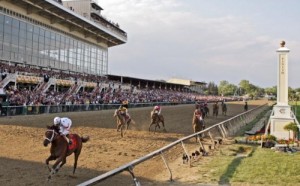The Preakness Stakes: Can Uncle Mo Write His Name in the History Books? 4
 The Grade One Preakness Stakes is known also as the “The Run for the Black Eyed Susans” due to the blanket of the Maryland State flower being traditionally draped over the winner’s neck at the end of the race.
The Grade One Preakness Stakes is known also as the “The Run for the Black Eyed Susans” due to the blanket of the Maryland State flower being traditionally draped over the winner’s neck at the end of the race.
The race is run annually over 9½ furlongs on a dirt track at the world famous Pimlico Racecourse in Baltimore, Maryland and is recognized as the second leg of the highly coveted American Triple Crown, which comprises of the Kentucky Derby (first leg) and Belmont Stakes (third leg). The attendances at the race are the second highest in the sport, with only the Kentucky Derby at Churchill Downs attracting more spectators, in 2010, 95,760 people attended but that was down from over 121,000 in 2007 following the banning of fans being able to bring their own beer. The race is open to colts and fillies, with the ‘boys’ having to carry 126lb and the girls 5lbs less.
The history of the race dates back to 1873 (2 years before the Kentucky Derby) when Pimlico introduced a new quality Stakes race for three year olds. It was called Preakness in honour of a colt of the same name, who was the winner of the feature race on the day that Pimlico first opened in 1870. The first ever race was won by My Sheba who won by 10 lengths in fantastic style which remained the most emphatic victory in the race until 2004 when Smarty Jones, who had won the Kentucky Derby two weeks previously, came home by 11 lengths. Smarty Jones was then aimed at the Belmont Stakes where he became an odds on favorite in the Belmont Stakes betting to win the race and thus the coveted Triple Crown, which had not been won since Affirmed achieved the feat in 1977. In heart breaking fashion however this hugely popular colt, whose presence at Belmont Park had attracted it’s biggest ever crowd, was to be denied in the ‘Belmont’ by the late run of 36/1 outsider Birdstone. Read the rest of this entry →



